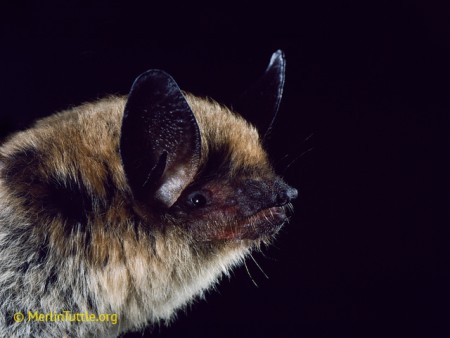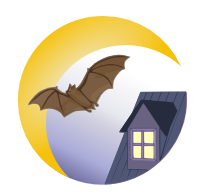Fringed bat

Latin name: Myotis thysanodes
Average size: Total length of 8-10 cm
Wingspan: 25-30 cm
Weight: 5-9 g
External characteristics: The fringed myotis is one of the largest species in the Myotis genus. Its name comes from the fringe of short hairs that line the outer edge of its tail membrane. This species possesses a coat that is light brown on its back with off-white underparts. Its ears are long, extending well beyond its nose when pushed forward. The tragus is long and slender. Males are more colourful than females.
Habitat: The fringed myotis is found in a variety of habitats from desert-scrub to fir-pine forests. In Canada, it is found in the dry southern interior of British Columbia where it inhabits arid grassland and Ponderosa Pine/Douglas-fir forest. It is a colonial bat that roosts in tightly packed clusters in caves, mines, and buildings. Little is known about its winter roosting habits in Canada. There is also little information on the winter ecology of the fringed myotis throughout its entire range, but an accumulation of fat in late summer suggests that this species moves short distances to hibernate.
Reproduction: After a gestation period of 50-60 days, female fringed myotis give birth to a single pup in late June or early July. At birth, newborns weigh 22% of their mother’s weight and make up 54% of her size, which is enormous. After only three weeks, the young reach adult size and can fly.
Federal status: Data Deficient
Seen in: British-Columbia

